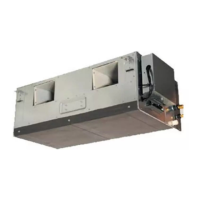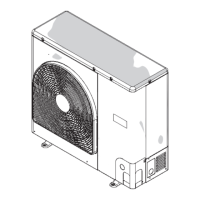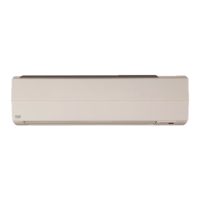What does TS (1) sensor error mean on my Toshiba Air Conditioner?
- BbgarciaSep 6, 2025
If your Toshiba Air Conditioner displays a TS (1) sensor error, it means that the TS (1) sensor may be displaced, disconnected or short-circuited.

What does TS (1) sensor error mean on my Toshiba Air Conditioner?
If your Toshiba Air Conditioner displays a TS (1) sensor error, it means that the TS (1) sensor may be displaced, disconnected or short-circuited.
What does heat sink sensor error mean for Toshiba Air Conditioner?
If your Toshiba Air Conditioner displays a heat sink sensor error, it means that abnormal temperature was detected by the temp. sensor of the IGBT heat sink.
What does a temperature sensor connection error mean on my Toshiba Air Conditioner?
If your Toshiba Air Conditioner displays a temp. sensor connection error, it means that the temp. sensor (TE/TS) may be connected incorrectly.
What causes an outdoor unit compressor lock in my Toshiba Air Conditioner?
If your Toshiba Air Conditioner displays an outdoor unit compressor lock, it indicates that a compressor lock was detected. The cause of this issue is related to the compressor circuit.
What does it mean when my Toshiba RAV-SM1404UT-E Air Conditioner displays an outdoor unit current detect circuit error?
If your Toshiba Air Conditioner is showing an outdoor unit current detect circuit error, it indicates that abnormal current was detected in AC-CT or a phase loss was detected. The cause may be the current detect circuit or the outdoor unit P.C. board.
Why does my Toshiba RAV-SM1404UT-E show a duplicated header indoor units error?
If your Toshiba Air Conditioner shows a duplicated header indoor units error, it means that there are two or more header units in the group. This is due to an indoor address setting error.
What causes an indoor unit fan error in my Toshiba RAV-SM1404UT-E Air Conditioner?
If your Toshiba Air Conditioner displays an indoor unit fan error, it indicates that the fan motor thermal relay has been activated. The possible cause may be the indoor fan motor or the indoor P.C. board.
What to do if my Toshiba RAV-SM1404UT-E detects indoor unit water overflow?
If your Toshiba Air Conditioner detects indoor unit water overflow, it means that the drainage is out of order or the float switch was activated. Check the drain pipe for clogging, drainage issues, the float switch circuit, and the indoor P.C. board.
What to do if my Toshiba RAV-SM1404UT-E Air Conditioner fan has vibration or balance issues?
If the fan in your Toshiba Air Conditioner has vibration or balance issues, replace it. If the fan is contaminated, brush or wash it.
What to do about rust and peeling coat on the exterior of my Toshiba RAV-SM1404UT-E Air Conditioner?
If you observe rust, peeling of the insulator, or peeling/lifting of the coat on the exterior of your Toshiba Air Conditioner, apply a repair coating to address these issues.
| Brand | Toshiba |
|---|---|
| Model | RAV-SM1404UT-E |
| Category | Air Conditioner |
| Language | English |
Safety precautions and warnings related to the installation process of the air conditioner.
Important safety guidelines and warnings to follow during the operation of the air conditioner.
Safety advice concerning the movement, repair, and general handling of the air conditioner unit.
Identification and description of the various parts of the indoor unit.
Identification and description of the various parts of the outdoor unit.
Explanation of the indicators and symbols displayed on the remote controller screen.
Detailed explanation of the buttons and functions available on the remote controller's operation section.
Steps for initial setup, preparation, and requirements before operating the air conditioner.
Details on the different types of timer operations available: OFF, Repeat OFF, and ON timer.
Guidance on adjusting louvers for optimal cooling and heating performance.
Step-by-step instructions for setting and adjusting the wind direction and swing.
Procedure for selecting individual indoor units to adjust wind direction.
How to configure different swing types for the air conditioner louvers.
Procedure for locking the louver position to prevent unwanted movement.
Instructions for enabling and adjusting the power saving mode settings.
Tips for maintaining comfortable room temperature efficiently.
Essential checks before operation and understanding the protective device.
Instructions for cleaning the air filters to maintain performance.
Guidelines for cleaning the indoor/outdoor unit and the remote controller.
Recommended periodic checks and procedures for storing the unit for extended periods.
Information on protection features, restart procedures after power failure.
Details on how the heating operation works, including preheating and warm air control.
Explanation of the automatic defrosting process during heating operation.
Specifies the recommended operating temperatures for cooling, dry, and heating modes.
Factors to consider when choosing a location for installing the air conditioner.
Guidelines and warnings for electrical wiring and connections during installation.
List of locations and environments where installation is not recommended.
Initial checks to perform when the air conditioner is not operating correctly.
Description of normal operational sounds or minor issues that are not considered failures.
Guidance on diagnosing and resolving specific symptoms or error conditions.












